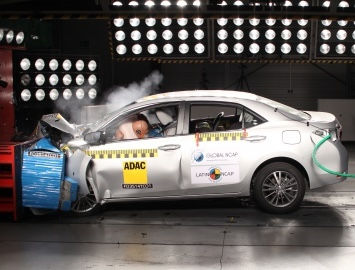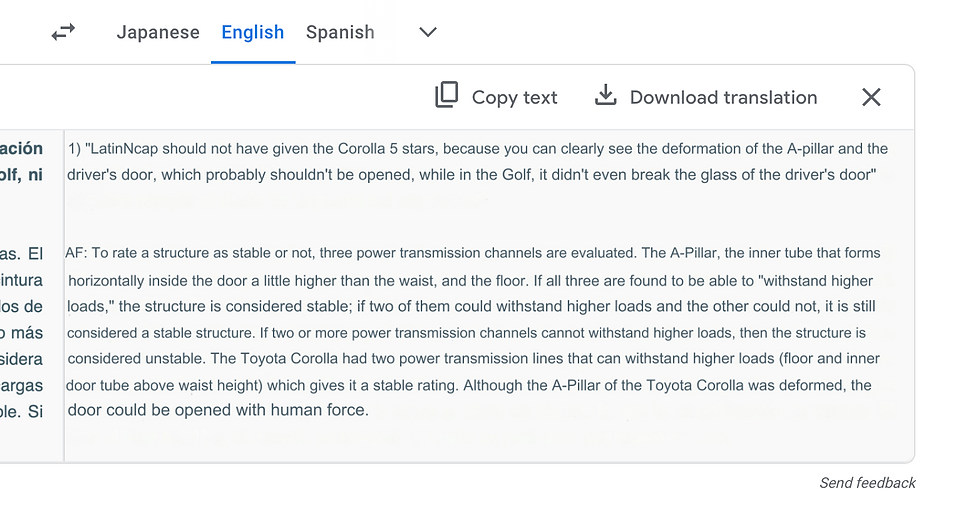Bent A-pillar but stable structure?
- The Yawning Chihuahua
- Oct 14, 2024
- 2 min read
BNCAP recently rated the Citroen BASALT and commenters have been quick to judge the structure as having become unstable during the test, citing the distorted windscreen pillar and door skin and feeding the air of skepticism around the already controversial programme.
The truth is, we simply cannot say looking at the test film whether the passenger compartment was penalised for becoming unstable or not, even though there is some evidence pointing to the former.
10 years ago Latin NCAP rated the previous-gen Brazilian Toyota Corolla 5 stars. Commenters in South America were surprised that the passenger compartment had been deemed stable, because the windscreen pillar was distorted during the test, and the driver's door skin pushed back.

Back then, Latin NCAP secretary general Mr Alejandro Furas (who, FYI, also heads GNCAP) had clarified the following to readers of the Uruguayan automotive publication Autoblog Uruguay.

Some modern compatibility-friendly designs like Honda's ACE body structure rely on homogeneous, efficient crumple zones and are designed to not transfer any significant forces rearwards through the door [source]. It follows logically that in these cars, any permanent deformation of the windscreen pillar or floor/sill in the test would lead to the passenger compartment being deemed unstable.
We do not know what kind of a structure the Citroen BASALT has, or whether the door sill deformed, etc. etc. Only BNCAP can tell us this. Until then, the status of the Basalt's passenger compartment integrity in the test is unknown.
Two points worth noting:
When Latin NCAP had tested the left hand drive, Brazilian-made, Citroen C3, both the roof and door sill had deformed permanently leading to the structure being classified as unstable. Latin NCAP have shown this in the following short-form video:
The combination of yellow feet and orange chest is common in cases of unstable structure and footwell, and it is very common in those cases for the knees to be painted orange, as instability prohibits manufacturers from being able to submit sled testing evidence for the protection of knees of drivers of different statures or positions. However it is also not known if the Basalt has lap pretensioning or other such countermeasures for the same, so this is not conclusive, and the yellow feet could also have been caused by pedal intrusion (like Skoda Kushaq GNCAP).

Source: BNCAP







Comments